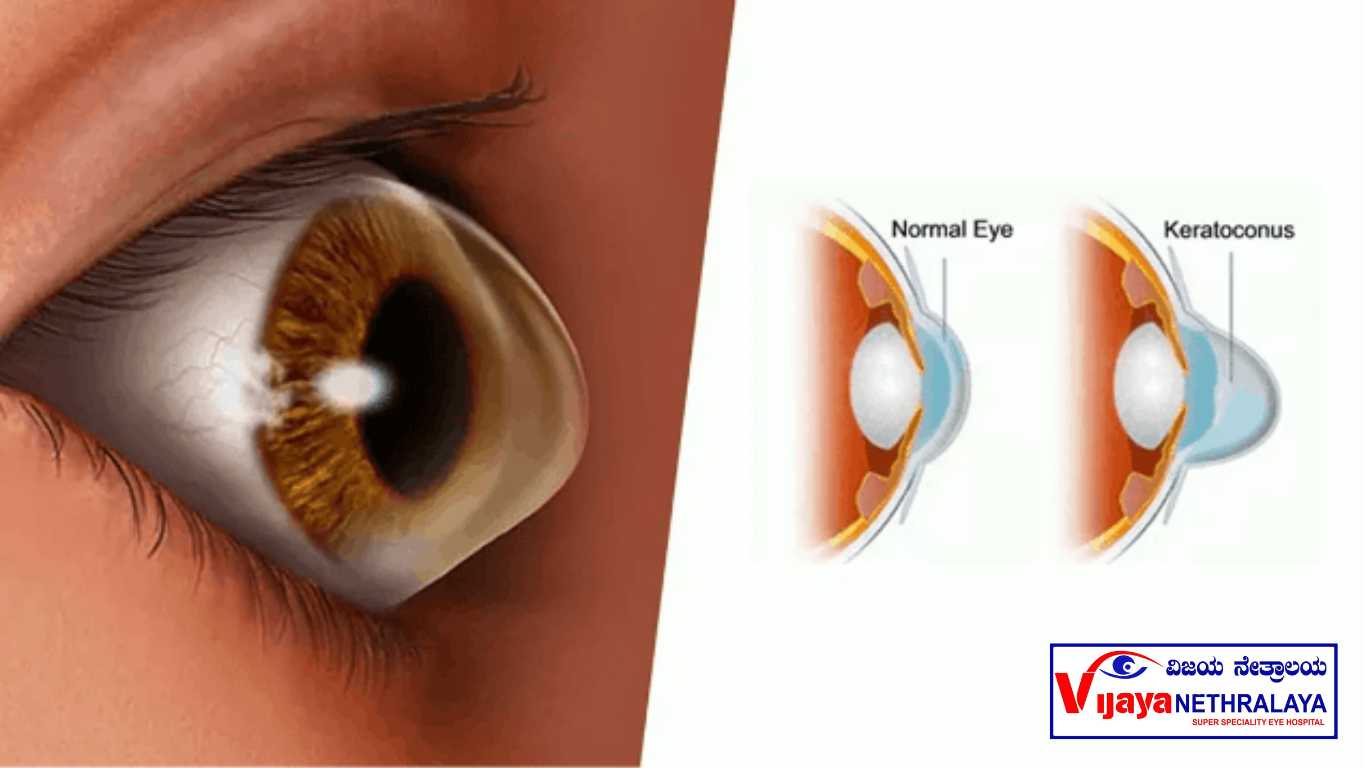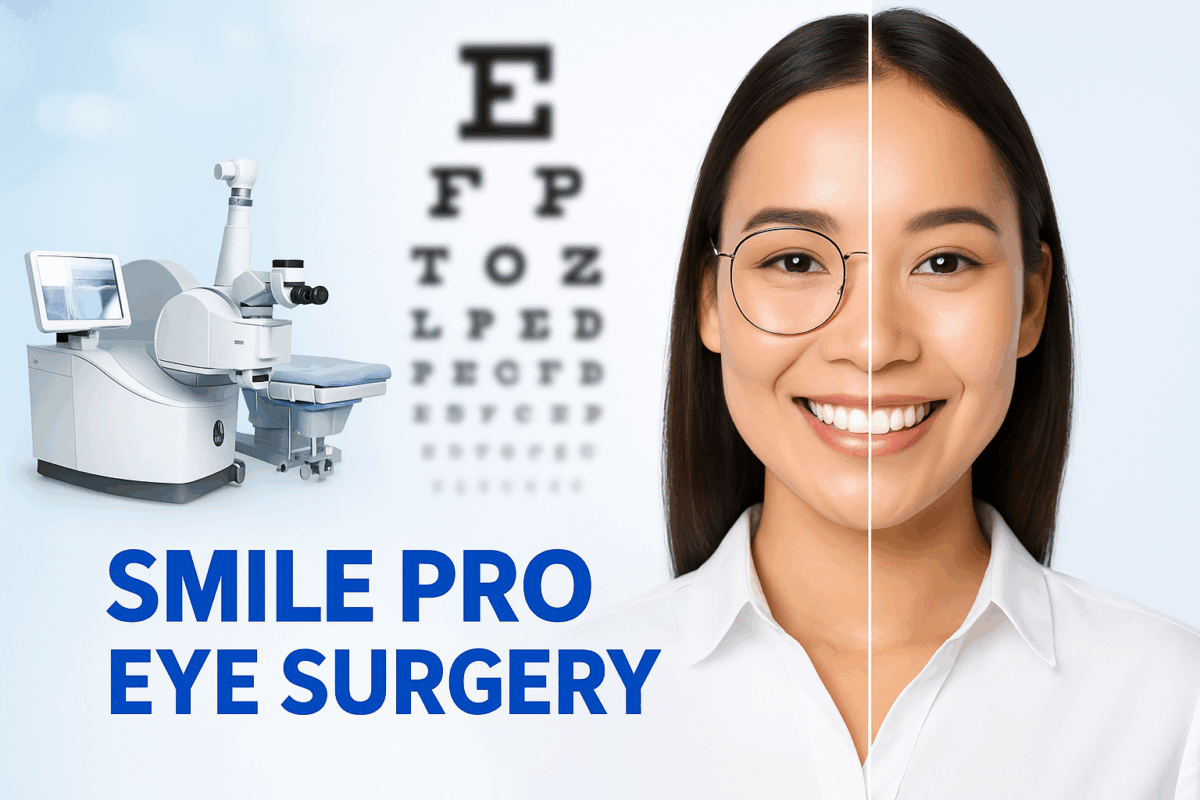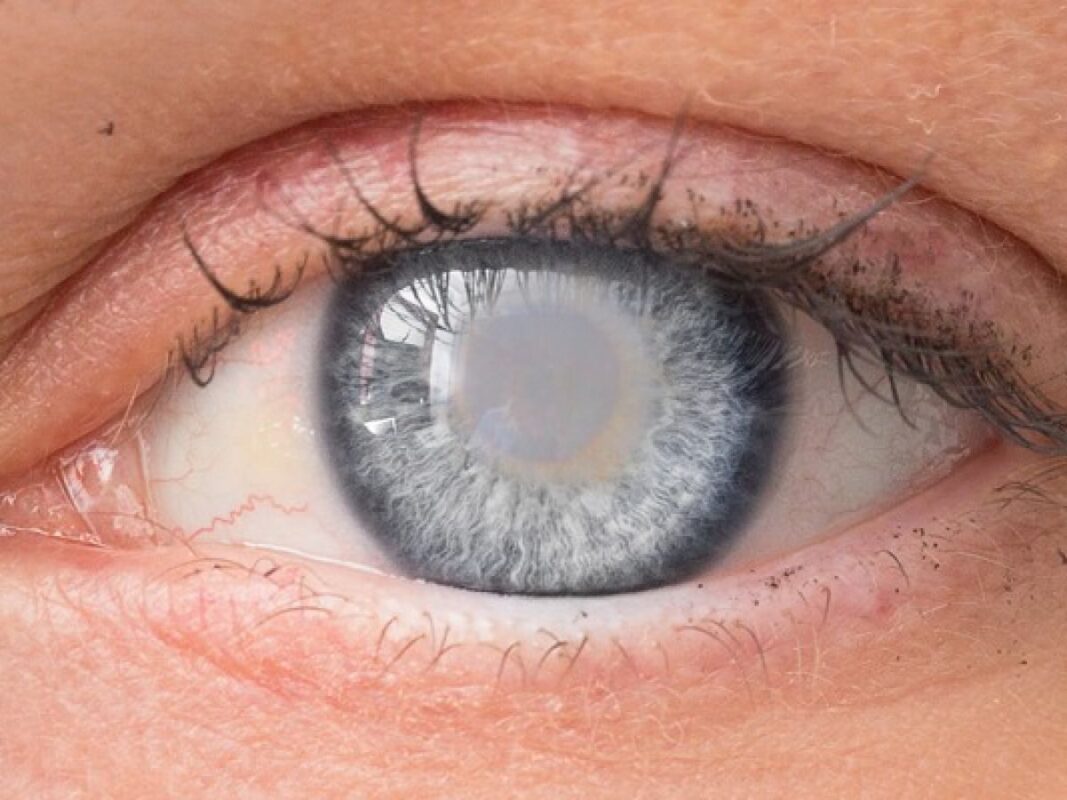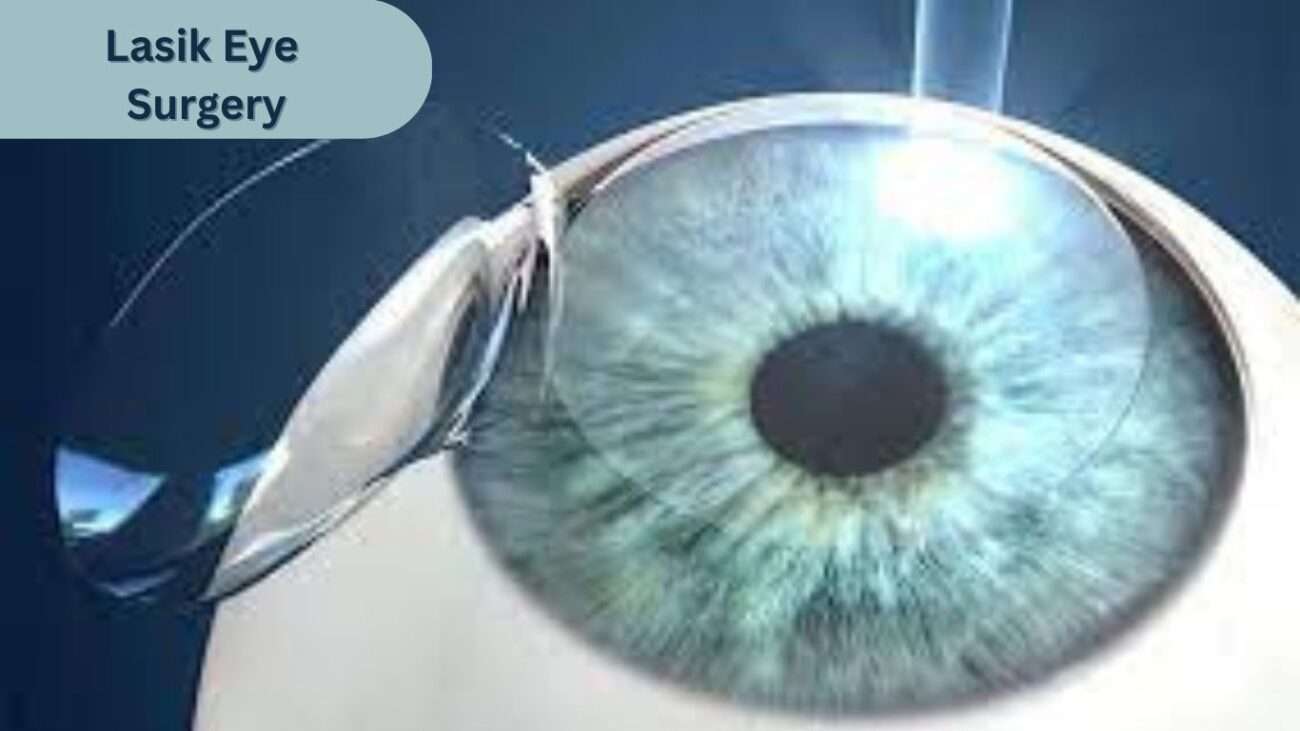Are you struggling with keratoconus? Perhaps you wonder if there’s a way to reverse this condition and regain clear vision. Well, in this article, we will explore the chance of reversing keratoconus and delve into various treatment options that may help. So, let’s dive in and discover more about this condition and, more chiefly, what you can do to improve your vision.
Understanding Keratoconus:
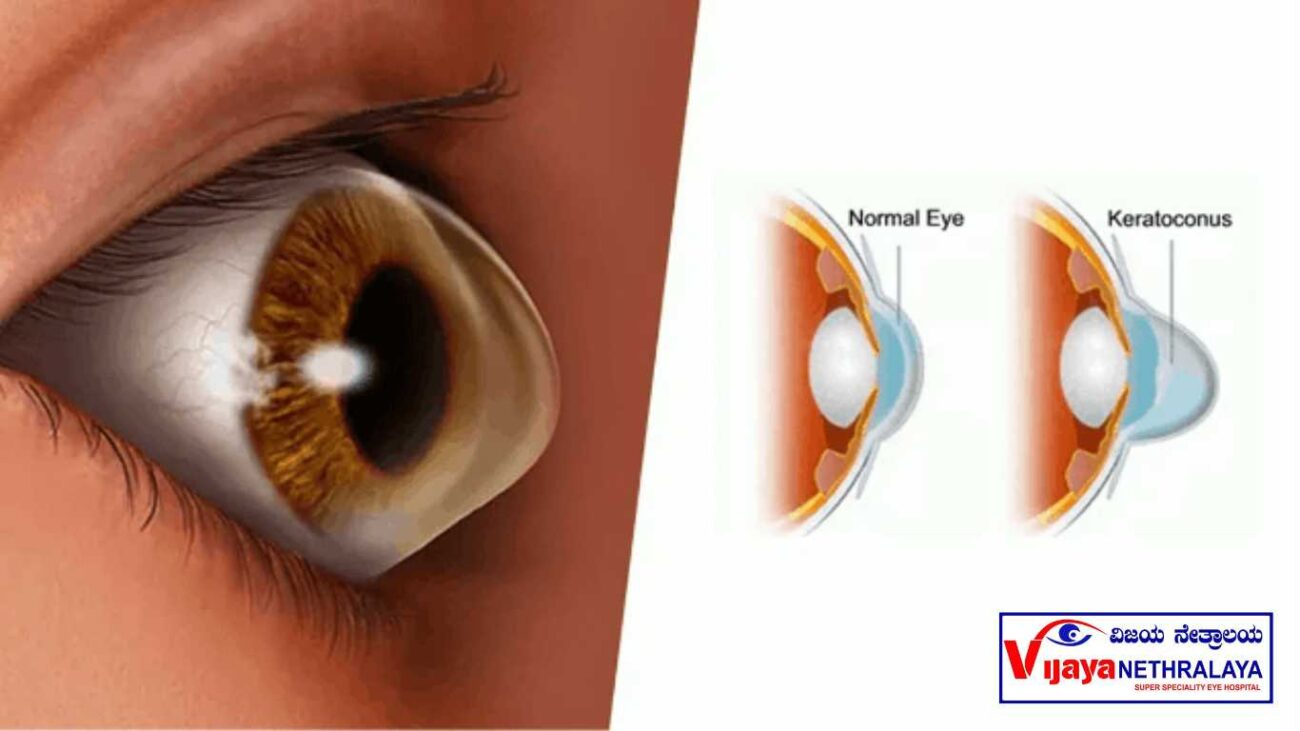
Keratoconus, a progressive eye disorder, affects the cornea, which is the transparent front surface of the eye. As a result, it causes the cornea to thin and bulge into a cone-like shape, leading to distorted and blurred vision. Importantly, this condition typically manifests during the teenage years or early twenties and may gradually worsen over time.
Causes and Risk Factors:
While researchers still do not know the exact cause of keratoconus, they believe that several factors contribute to its development. These factors include genetic predisposition, chronic eye rubbing, certain hormonal disorders, and underlying conditions such as Down syndrome or connective tissue disorders. Moreover, an increased risk of keratoconus has been associated with excessive exposure to ultraviolet (UV) rays and a history of wearing poorly fitted contact lenses.
Early Detection and Diagnosis:
Early detection of keratoconus is crucial for better treatment outcomes. Regular comprehensive eye examinations, including corneal topography, help in identifying any changes in the corneal structure and detecting keratoconus at an early stage. The diagnostic process may involve measuring corneal curvature, and corneal thickness, and assessing visual acuity.
Treating Keratoconus: A Multi-Faceted Approach:
The treatment of keratoconus typically involves a multi-faceted approach tailored to the individual’s specific needs. Let’s explore some of the commonly used treatment options:
1. Corneal Cross-Linking:
Corneal is a minimally invasive procedure that aims to halt the progression of keratoconus. It involves applying riboflavin eye drops to the cornea and exposing it to ultraviolet light. This combination, therefore, strengthens the corneal collagen fibers, increasing the cornea’s stability and halting further deformation.
2. Intacs or Intrastromal Corneal Ring Segments:
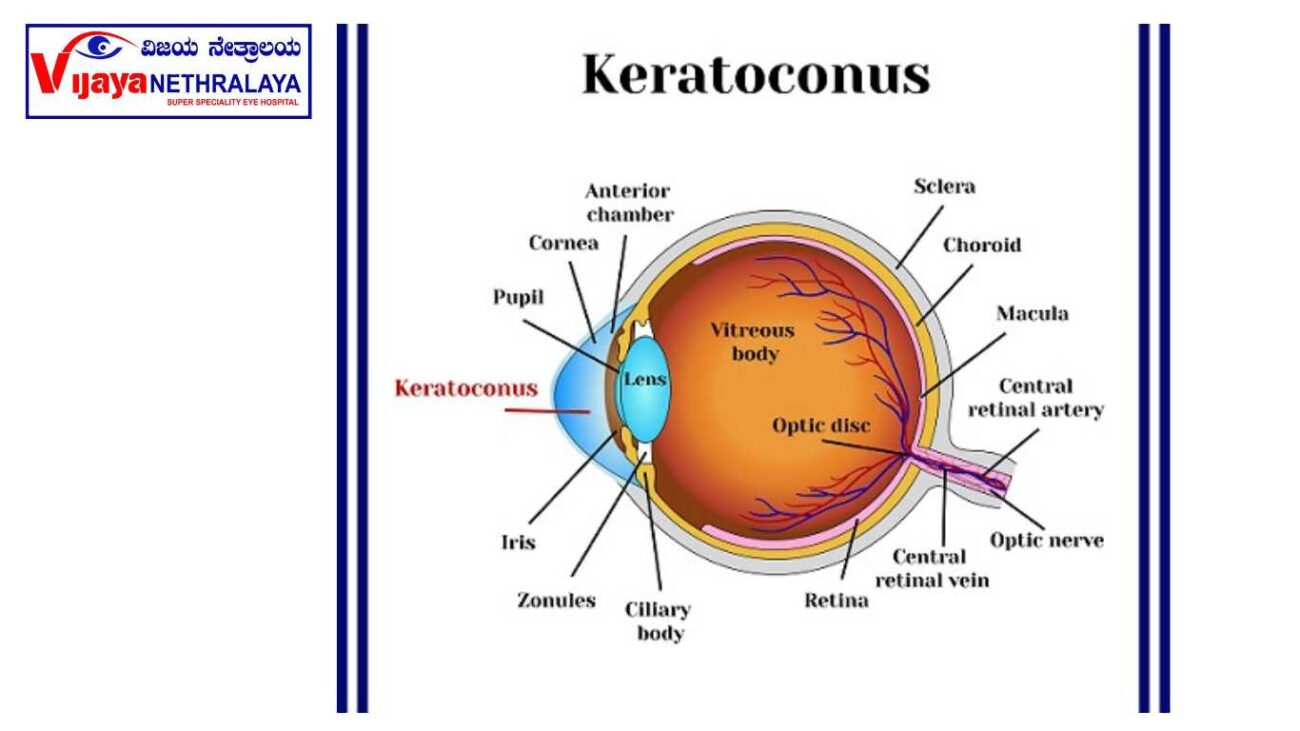
Intacs, also known as intrastromal corneal ring segments, are small, clear plastic inserts placed within the cornea. These inserts help reshape the cornea, improving vision and reducing the cone-like bulge caused by keratoconus.
3. Topography-Guided Custom Ablation:
Topography-guided custom ablation utilizes advanced laser technology to reshape the cornea based on its unique irregularities. This personalized treatment approach aims to improve visual acuity and reduce higher-order aberrations caused by keratoconus.
4. Implantable Collamer Lenses (ICL):
Surgeons surgically implant these specialized lenses into the eye, effectively correcting the refractive error and significantly improving visual clarity.
5. Corneal transplantation:
In severe cases of keratoconus where other treatment options are insufficient, surgeons may consider performing a corneal transplant. During this surgical procedure, they replace the damaged cornea with a healthy donor cornea. Corneal transplantation can significantly improve vision but requires a longer recovery period.
Lifestyle Modifications to Support Treatment:
In addition to medical interventions, certain lifestyle modifications can aid in managing keratoconus. These include:
- Avoiding excessive eye rubbing, which can aggravate the condition.
- Protecting the eyes from harmful UV rays by wearing sunglasses with UV protection.
- Following a balanced diet rich in vitamins and antioxidants to support overall eye health.
- Maintaining good hygiene when handling contact lenses, if prescribed.
The Importance of Regular Eye Exams:
Regular eye exams play a vital role in monitoring the progression of keratoconus and evaluating the effectiveness of the chosen treatment plan. Your eye care professional will assess any changes in your corneal shape, visual acuity, and overall eye health, ensuring timely adjustments to your treatment as needed.
Can Keratoconus Be Completely Reversed?
While it is not possible to completely reverse keratoconus, early detection and appropriate treatment can help effectively manage the condition. Treatment options aim to stabilize the cornea, improve visual acuity, and enhance the quality of life for individuals living with keratoconus.
Tips for Managing Keratoconus:
Here are some additional tips to help manage keratoconus:
- Follow your eye care professional’s instructions regarding the use of prescribed medications and eye drops.
- Attend regular follow-up appointments to monitor your condition and make necessary adjustments to your treatment plan.
- To avoid excessive eye strain, it is essential to take regular breaks during activities that require intense visual concentration. By doing so, you can give your eyes the necessary rest and prevent potential discomfort or fatigue.
- Communicate openly with your eye care professional about any concerns or changes in your vision.
Author Details:
Dr. Sushruth Appajigowda is a well-known Cornea, Cataract, Glaucoma and LASIK Surgeon in Bangalore, and the chief Cataract and Refractive surgeon at Vijaya Nethralaya Eye Hospital, Nagarbhavi Bangalore. Known as one of the best LASIK surgeons in the country, he has over 12+ years of experience with multiple platforms of LASIK like ZEISS, ALCON, SCHWIND, AMO, and Bausch and Lomb. He has conducted over 5000 LASIK. Dr Sushruth is a Certified Refractive Surgeon and Fellow of All India Collegium Of Ophthalmology. He is recognized speaker in various National and International Forums. His expertise lies in choosing the right type of procedure for you based on your health requirement.

Conclusion:
Conclusion:
While keratoconus cannot be fully reversed, various treatment options can help manage the condition effectively. Early detection, proper diagnosis, and a personalized treatment plan are key to improving visual acuity and enhancing the quality of life for individuals with keratoconus.
Frequently Asked Questions (FAQs)
Q: Can keratoconus be reversed without surgery?
In addition, while surgery is often recommended for advanced cases, early-stage keratoconus can sometimes be managed with non-surgical interventions. These interventions include corneal cross-linking or the use of specialized contact lenses.
Q: Is keratoconus a common condition?
A: Keratoconus is considered a relatively rare condition, affecting about 1 in 2,000 people. However, its prevalence may vary across different populations.
Q: Can keratoconus cause blindness?
A: Although keratoconus can significantly affect vision, leading to visual impairment, it rarely causes total blindness. With appropriate management, most individuals with keratoconus can maintain functional vision.
Q: Can keratoconus be detected during a routine eye exam?
A: Yes, regular comprehensive eye exams, including corneal topography, can detect keratoconus at an early stage or even before noticeable symptoms occur.
Q: Can keratoconus affect both eyes?
A: Yes, keratoconus typically affects both eyes, although the severity and progression may vary between them.

